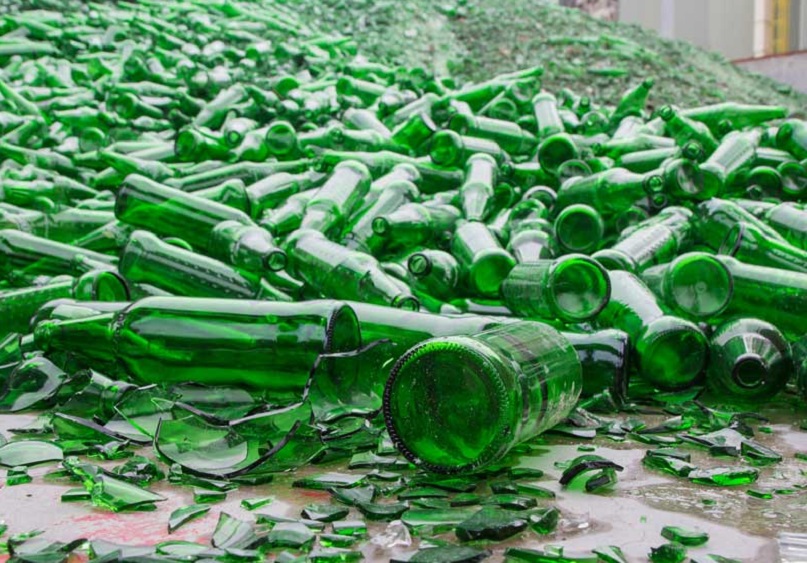
ONE of the ways of reducing the consumption of natural sand is to utilise wastes as an alternative material. Recycling of wastes could reduce the demand for virgin natural resources and help to dispose of them effectively. The volumes of wastes generated each year in the country is alarmingly increasing due to a rise in the pollution. When it comes to solid waste the world produces nearly 2.0 billion tonnes of municipal solid waste every year, which is expected to grow to 3.4 billion tonnes by 2050. The increasing price and diminishing reserves of construction sand encourage a need to develop its sustainable and cost-effective replacement, helping the transition towards a circular economy. Traditional construction sand can be replaced by waste glass. Waste glass is a derivative of natural sand and could potentially show similar geotechnical behaviour. Using crushed waste glass as an alternative to traditional sand would potentially offer a double-duty benefit by helping to address the geo-environmental challenges of natural sand depletion and disposal of ever-increasing waste glass, together.
Natural aggregates are widely used in a range of applications. Presently, the construction industry is the biggest consumer of natural resources in the world. It is a common practice to crush and screen the rock formations to different specifications, producing aggregates suitable for different construction applications. The consumption of aggregates is expected to increase at a rate of 5% per annum in India. Major sources of natural construction aggregates include crushed stone, gravel, and sand. In the country alone, nearly 300 million tonnes of aggregates are extracted each year, which is expected to further increase in the coming years. A key concern for sustainable infrastructure construction is the continuous diminution of readily-available construction aggregates. Environmentally, the extraction and logistics of aggregates release carbon footprint, which is harmful to the ecosystem. Consequently, nowadays, construction materials are increasingly being evaluated by their ecological footprint Natural sand is a widely used raw material and has become the second-most widely consumed natural resource on planet Earth, after freshwater . It is estimated that between 32 and 50 billion tonnes of sand and gravel are extracted globally each year, which is largely used in construction. As an example, the construction of a medium-sized house requires 200 tonnes of sand; a hospital needs 3000 tonnes of sand, and each kilometre of highway construction needs 30,000 tonnes of sand. Studies show that sand is currently being extracted at a rate far greater than its renewal. Indiscriminate mining of sand could endanger animal species and habitats, harm aquatic life and cause biodiversity loss. It could also cause beach erosion, making coastal communities vulnerable to floods and causing loss to the eco-tourism industry. It is, therefore, necessary to find ways to reduce the demand for natural sand and to look for sustainable and low-carbon alternatives. In this regard, research has proven that the potential use of ever-increasing waste glass as a sustainable alternative to depleting natural and manufactured sand in geotechnical construction is feasible. The findings showed that the geotechnical behaviour of crushed waste glass is similar, or sometimes even superior, to traditional construction sands. Overall, the crushed waste glass could potentially serve as an alternative and smart geo-material, ultimately promoting the recycling of waste glass, reducing the burden on landfill and conserving natural resources, all helping the transition towards a circular economy.
Vijay Kumar HK
Follow this link to join our WhatsApp group: Join Now
Be Part of Quality Journalism |
Quality journalism takes a lot of time, money and hard work to produce and despite all the hardships we still do it. Our reporters and editors are working overtime in Kashmir and beyond to cover what you care about, break big stories, and expose injustices that can change lives. Today more people are reading Kashmir Observer than ever, but only a handful are paying while advertising revenues are falling fast. |
| ACT NOW |
| MONTHLY | Rs 100 | |
| YEARLY | Rs 1000 | |
| LIFETIME | Rs 10000 | |










